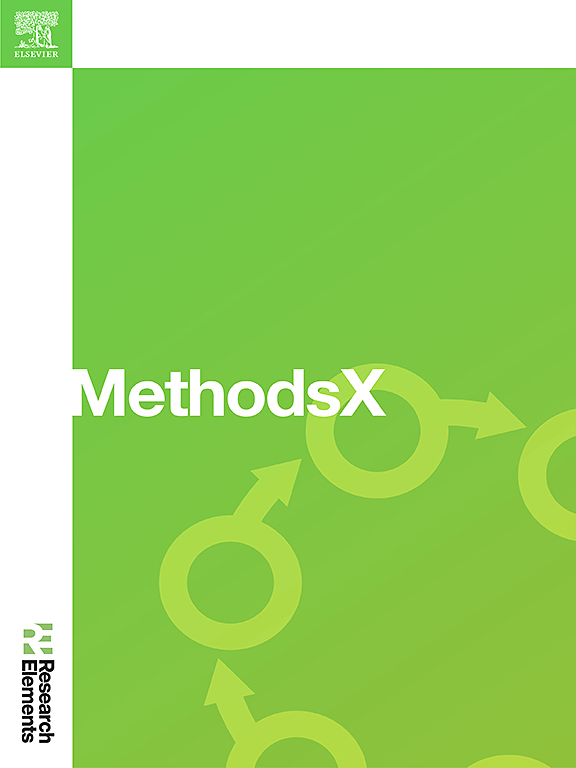IF 1.6
Q2 MULTIDISCIPLINARY SCIENCES
引用次数: 0
摘要
本研究介绍了一种具有成本效益和流线型的热解气相色谱-质谱(Py-GC/MS)方法,用于检测和定量自来水中的微塑料,重点关注7种常见聚合物。与依赖昂贵的热解产物库的传统方法不同,该方法通过将其m/z值与市售的质谱库(Wiley Registry第12版/NIST 2020)相匹配来识别热解片段,并使用纯聚合物标准品确认结果。采用两种方法对回收率进行了评估,结果表明,与分段外推法相比,对整个过滤器的分析提供了更准确的结果。该方法对所有目标聚合物(R²>;0.996),对聚苯乙烯(PS)的检出限低至0.01µg,对聚乙烯(PE)的检出限高达2.59µg。对自来水样品的检测结果一致,上午样品中PS的检测范围为2.532 ~ 2.571 ng/L,下午样品中PS的检测范围为0.867 ~ 1.540 ng/L,聚丙烯和PE均低于定量限(LOQ)。该方法为自来水和其他环境基质中微塑料的常规实验室分析提供了一种可靠、高效和经济的工具。•23分钟的Py-GC/MS方法可有效定量自来水中的微塑料。•使用市售质谱库的成本效益策略。•准确定量与ng/L灵敏度通过纯聚合物标准验证。本文章由计算机程序翻译,如有差异,请以英文原文为准。

A straightforward Py-GC/MS methodology for quantification of microplastics in tap water
This study introduces a cost-effective and streamlined Pyrolysis Gas Chromatography-Mass Spectrometry (Py-GC/MS) methodology for detecting and quantifying microplastics in tap water, focusing on seven common polymers. Unlike conventional approaches relying on expensive pyrolyzate libraries, this method identifies pyrolysis fragments by matching their m/z values with commercially available mass spectral libraries (Wiley Registry 12th Edition/NIST 2020) and confirms findings using pure polymer standards. Recovery was evaluated using two approaches, demonstrating that analysis of the entire filter provided more accurate results compared to extrapolation from subsections. The method exhibited excellent linearity for all targeted polymers (R² > 0.996) and achieved detection limits as low as 0.01 µg for polystyrene (PS) and up to 2.59 µg for polyethylene (PE). Application to tap water samples revealed consistent detection of PS, ranging from 2.532 to 2.571 ng/L in morning samples and 0.867 to 1.540 ng/L in afternoon samples, with polypropylene and PE below the limit of quantification (<LOQ). This method provides a reliable, efficient, and cost-effective tool for routine laboratory analysis of microplastics in tap water and other environmental matrices.
- •A 23-minute Py-GC/MS method efficiently quantifies microplastics in tap water.
- •Cost-effective strategy using commercially available mass spectral libraries.
- •Accurate quantification with ng/L sensitivity validated by pure polymer standards.
求助全文
通过发布文献求助,成功后即可免费获取论文全文。
去求助
来源期刊

MethodsX
Health Professions-Medical Laboratory Technology
CiteScore
3.60
自引率
5.30%
发文量
314
审稿时长
7 weeks
期刊介绍:
 求助内容:
求助内容: 应助结果提醒方式:
应助结果提醒方式:


